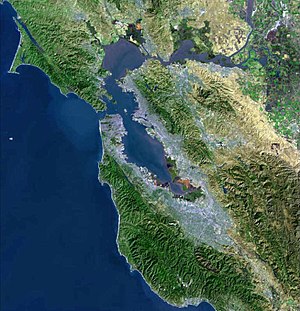The San Francisco Business Times announced its Best Places to Work in the Bay Area for 2011. This year’s ranking brought nominations from 301 companies representing employees in 12 counties around the greater Bay Area. The eighth annual Best Places to Work awards recognized the top employers in five categories based on company size.
Are the “Best Place to Work” the best places to work?
No, not exactly. In short, my favorite answer – it depends.
I say this as someone who was able to get Barclays Global Investors (now owned by BlackRock) to participate in the big company category in 2007, where it finished third (darn you Genentech!) and first in the same peer group in 2008. BGI was purchased by New York City-based BlackRock in 2009.
The brief answer is that you get a very, very rough sense of one firm of a certain size compared against another firm of the same size for the factors used in the survey against another.
The long answer is better, perhaps even more interesting.
First, surveys – whether they be of the employee or voter polling type – are most reliable when it’s apples to apples time; same demographics (think gender, age, background, etc.) compared to same demographics over the same period of time. When those things don’t happen, they surveys get skewed – they lose their accuracy. [See Nate Silver’s FiveThirtyEight blog at the New York Times for some great posts about the art and science of polling.]
So if people in similar firms have similar values about what’s important to them as employees and have similar demographics, it’s a great way to benchmark one firm against another. If not, it’s just so-so.
Second, the obvious; some firms participate and many others don’t. Apple? No. Facebook? No. Genencor? No. Schwab? No. BlackRock? McKesson? No. Novartis? No. Twitter? No. Yelp? No.
You get the picture.
Sometimes this lack of participation is a lack of interest or time, sometimes it’s a case of being smart. Coming in 34th in your peer cohort may not be your path to employment security if the folks at the top are used to winning, and it was your idea to enter.
So who did win this year?
1,501+ Employees (10 companies listed)
- Intuit Inc.
- Juniper Networks Inc.
- Kaiser Permanente
- Genentech Inc.
- Santa Clara University
501-1,500 Employees (15 companies listed)
- Kimpton Hotel and Restaurant Group, LLC
- Zynga Game Network Inc.
- Riverbed Technology Inc.
- Fairmont Hotels & Resorts
- Fenwick & West LLP
101-500 Employees (50 companies listed)
- Bradley Real Estate
- Box.net Inc.
- Workday Inc.
- DPR Construction Inc.
- Demandforce Inc.
51-100 Employees (25 companies listed)
- Gallileo Learning
- Eventbrite Inc.
- Primitive Logic Inc.
- EHDD Architecture
- ENGEO Inc.
25-50 Employees (25 Companies listed)
- Akraya Inc.
- Keroku Inc.
- Grockit Inc.
- Cryptography Research
- Simplion Technologies Inc.
Take it all with a large grain of salt. Armed with this info, along with some other reasonable research though, a new job hunt has a good start.
Life Back West is an occasional set of writings focused on ways people, teams and organizations can be both more effective (doing the right thing) and more efficient (doing the right thing well). More about executive, career and team / leadership coaching services can be found at the “About J. Mike Smith and Back West, Inc.” sidebar or the “Hire Me” tab above. You can also read an online interview with me at WhoHub, as well as participate in my learning community courtesy of KnowledgeCrush.


